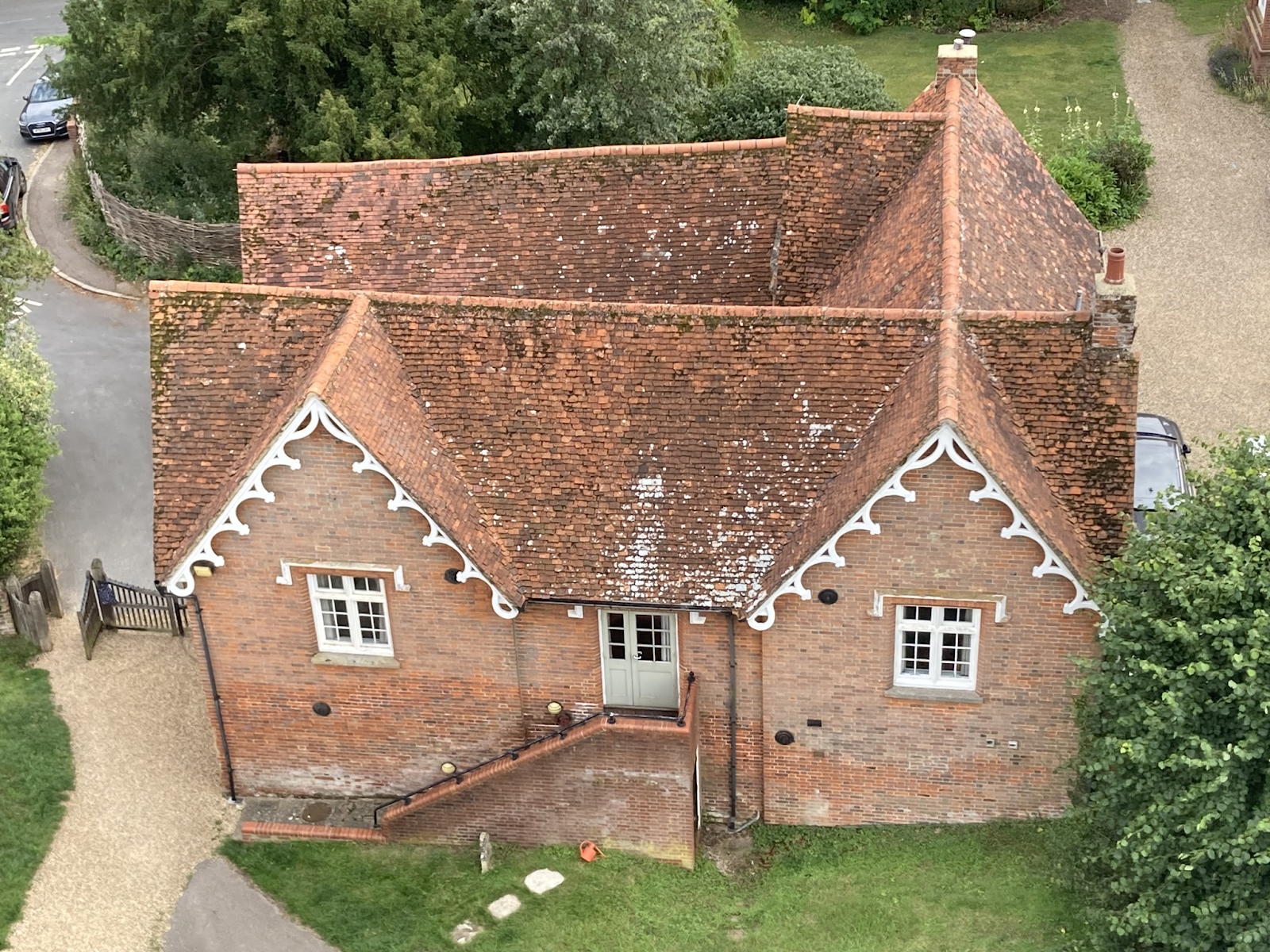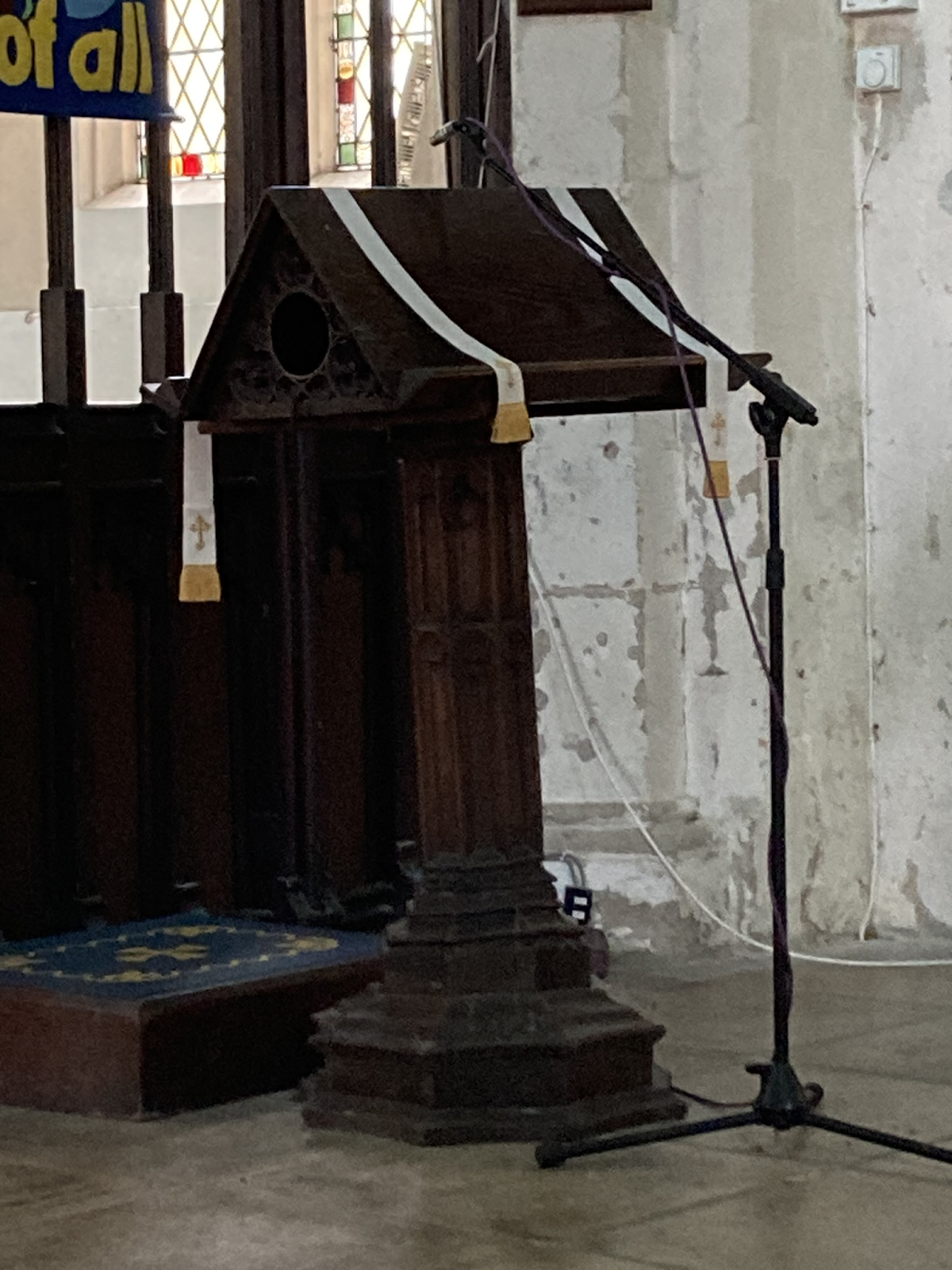Sir Paul Britton visited Newport, Essex, on Thursday 20 July as part of a fundraiser for the Friends of St Mary’s. Sir Paul, a former senior civil servant who is now a trustee of the National Churches Trust and chair of the Canterbury Diocesan Advisory Committee, entertained and informed us all with a fantastic talk in the church itself as part of an open afternoon.
Newport’s church is remarkable, he explained, not necessarily for its
fittings and ornamentation – although some of them are indeed special – but simply for its size. It is rather large
for a parish church. From its beginnings it was laid out in its distinctive
cruciform shape, Sir Paul observed. We
know this because the archway in the north transept dates from around the 1220s,
making it the oldest extant part of the church. Adjacent to it, other large arches
were probably from the 1240s – as can be dated from the distinctive nail-head patterning.
Given that these large arches are at the centre of the church as we still see
it today, Newport’s church looks much the same now as it did in the first half
of the thirteenth century.
Of course, Sir Paul went on, there would also have been distinct
differences between the thirteenth-century church, and the building as it has
now evolved. For one thing, the roof would have been completely different. The
roofline as we see it today was raised, possibly some time in the fifteenth century.
The original roof would have been steeply pitched – possibly thatched. Today's much flatter flat
roof over the chancel cuts through the top of the East window – showing how this roof must have been a later innovation.
Similarly, the West tower as it is today is a recreation of the 1850s,
when the church was restored after many decades of neglect. It remains conjectural
whether the eight angels that decorate the roof date from this time, or from
the fifteenth century. Sir Paul felt they were probably medieval.
The north and south aisles were added at some point between the thirteenth
and fifteenth centuries, and the roofs of the north and south transepts were
replaced. The room over the porch is likely to date from the fifteenth century,
as does the vestry. There remains
speculation as to the purpose of the room above the porch, but it is likely to
have a relationship to the college for which the church was founded, and to the
educational role played by the church alongside the grammar school (which occupied
the building on the site of what is now Church House).
Sir Paul pointed out the other reasons why Newport church is so special.
The chest in the south transept dates from the late thirteenth century, and is
the earliest known example in the country of oil painted onto wood. The painting
on the lid shows the crucifixion, flanked by the figures of John, Mary, Peter
and Paul. The chest is a very special piece, and was loaned to an exhibition in
London in the 1980s.
Equally, Newport’s font dates from the thirteenth century, while its lid is fifteenth century. The lectern at the front of the church is also a medieval survival, likely to date from the fifteenth century. The rood screen contains some medieval tracery too, though has been heavily restored.
Sir Paul observed that the memorials in the chancel were also
particularly fine, the earliest dating from the first half of the eighteenth century.
Another memorializes Joseph Smith of Shortgrove, who served as private secretary
to William Pitt the Younger.
Sir Paul’s special subject is stained glass windows. He observed that
the windows to the north transept contain medieval glass. Elsewhere, in the chancel,
in the north and south transept and in the nave, nineteenth century glasses
have been introduced.
On the same evening as the talk, Sir Paul gave an illustrated lecture in
Church House, about the history and importance of the stained glass tradition.
A packed audience came, and were enthralled by over 120 photographs, all of
them taken by Sir Paul himself on his travels to churches. The event raised
nearly £500 for the church tower restoration. The money will be very well spent
indeed.
Sir Paul’s talk inspired me to look into other facts about the church.
An interesting article by Daniel Secker draws attention to the fragment of an
Anglo-Saxon cross that has been inserted in the outer north wall. This may hint
as to the possibility that there was a saxon church on the same site as the
present-day church, which itself is built at the highest point in the village.
It was also a real privilege to have access to the church tower, and to
take the panorama of the village from the top.














No comments:
Post a Comment